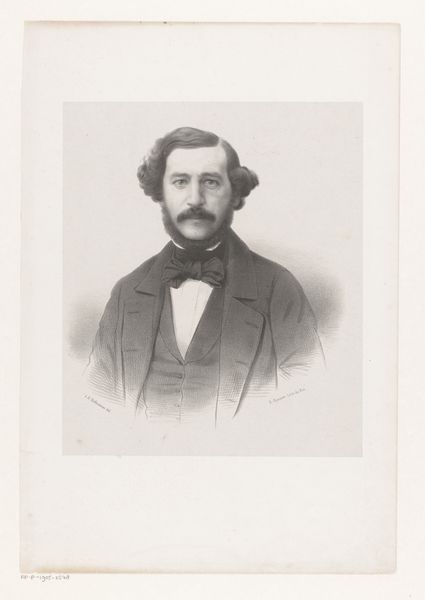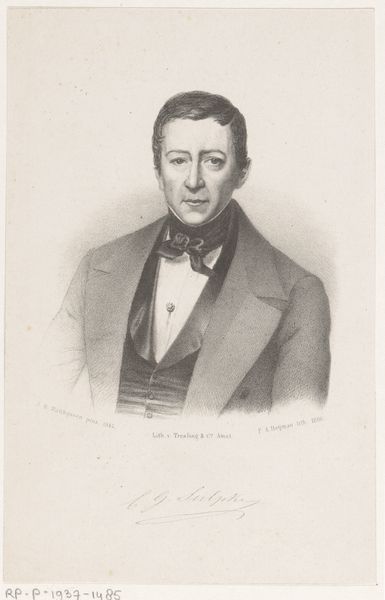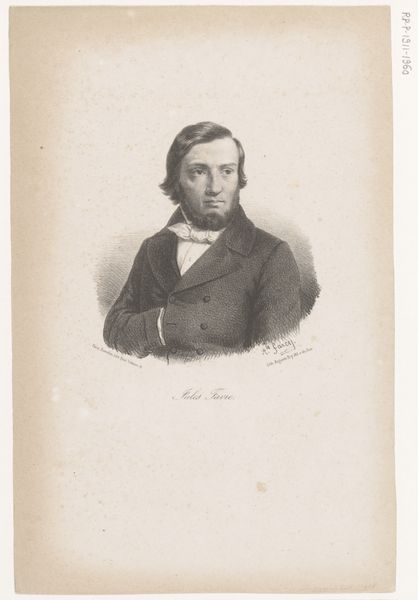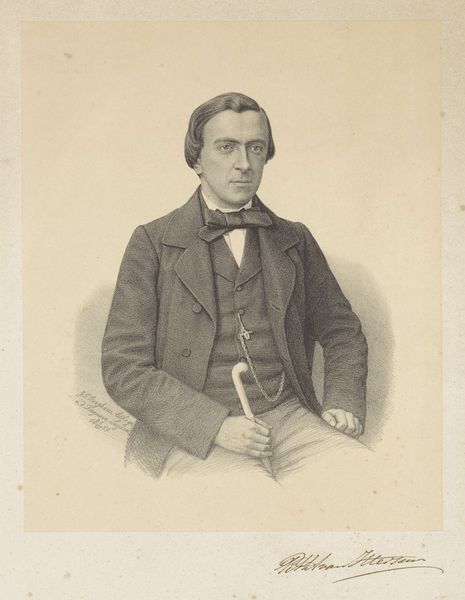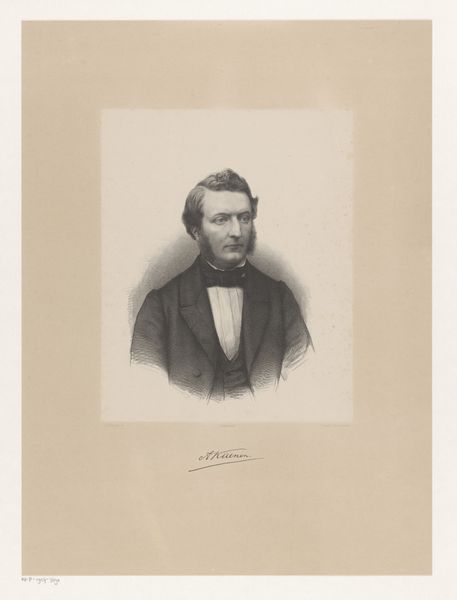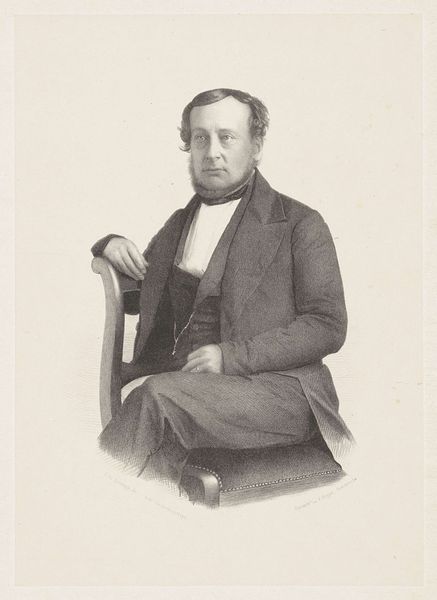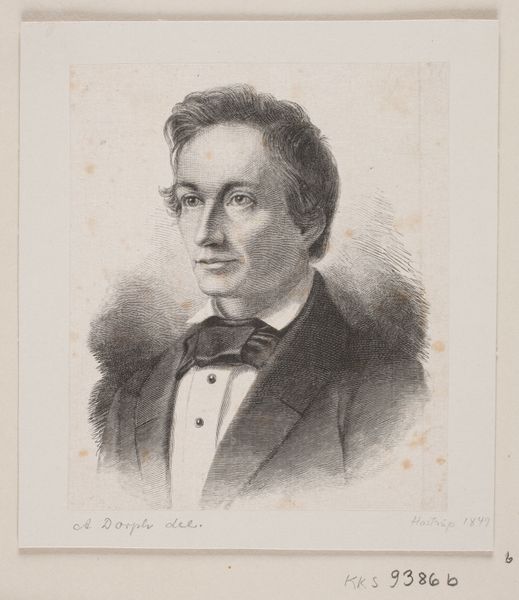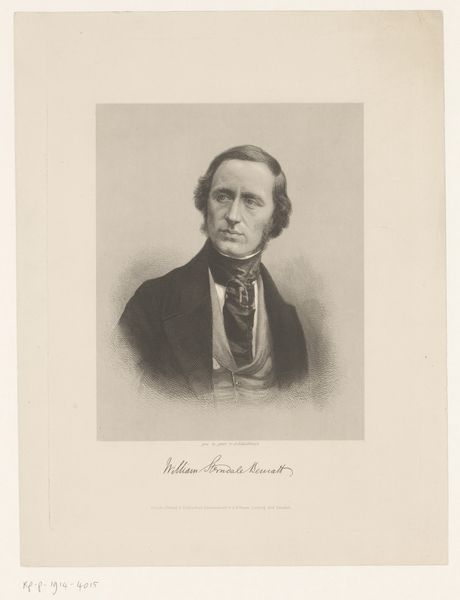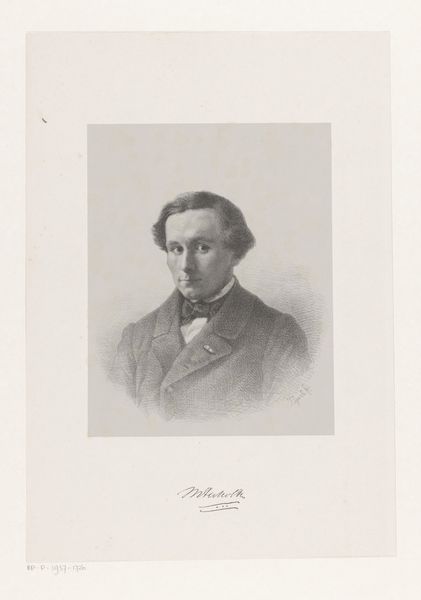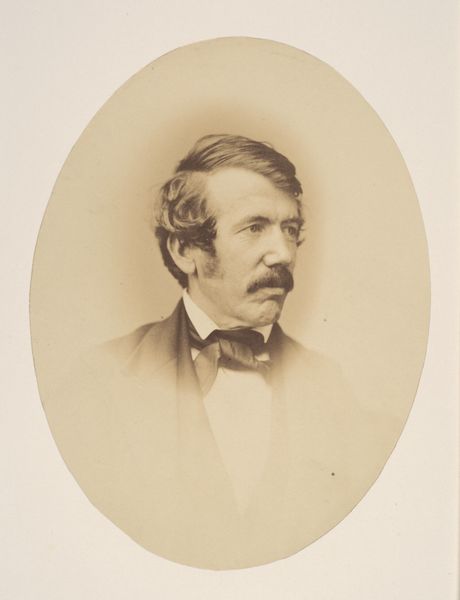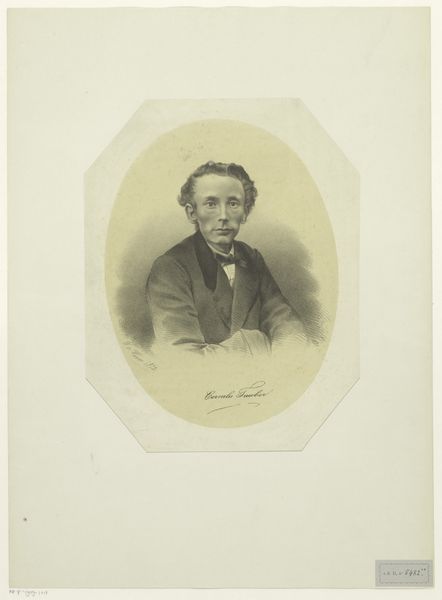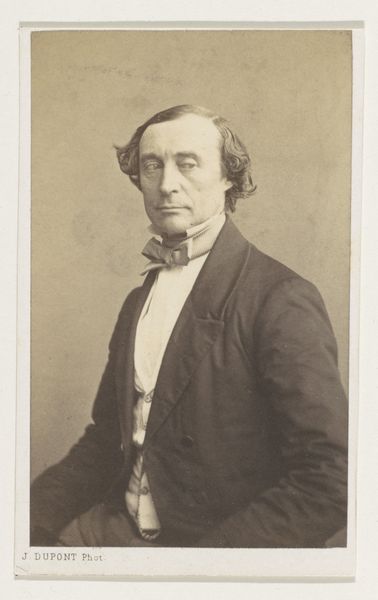
drawing, lithograph, print, graphite
#
portrait
#
pencil drawn
#
drawing
#
16_19th-century
#
lithograph
# print
#
caricature
#
portrait reference
#
pencil drawing
#
graphite
#
portrait drawing
#
realism
Dimensions: 205 None (height) x 150 None (width) (bladmaal)
Editor: Here we have "F. V. Hultmann," a lithograph from 1866, currently held at the SMK. The subject appears quite serious, almost stern. What stands out to me is how much detail is packed into a seemingly simple portrait. How do you read this piece? Curator: Considering the socio-political landscape of the time, the sternness you observe likely reflects the artist’s desire to portray Hultmann with a certain dignity and gravitas. Think about the rising middle class, and the democratization of portraiture at this time, enabled by printmaking techniques such as lithography. Does this then suggest this artwork as a potential comment about class, stature and cultural role? Editor: That’s interesting, I hadn’t thought of the rising middle class implications. But with the democratisation of the portraits with printing press does it suggest an intention of a political campaign perhaps? Curator: Not a political campaign in our modern sense, but rather, a project to affirm or solidify the status of certain individuals within the cultural sphere. The image, reproduced and circulated, helped shape public perception of Hultmann and his role. What kind of role would that have been? Editor: As a 'Kongelig Skuespiller,' as the text below states, likely portraying him as a figure of national importance and talent. Curator: Precisely. And think about who commissioned or consumed such images. It was often the rising bourgeoisie, eager to associate themselves with culture and refinement. Thus the portrait performs a crucial social function. Editor: So, this isn’t just a likeness, but a statement about the subject's and perhaps even the owner's place in society. Curator: Indeed! We can read portraits, and especially reproduced portraits such as these, as barometers of cultural values and societal aspirations. I never thought of portraits that way before. Editor: A perspective to take with me going forward. Thanks for your insightful points!
Comments
No comments
Be the first to comment and join the conversation on the ultimate creative platform.
